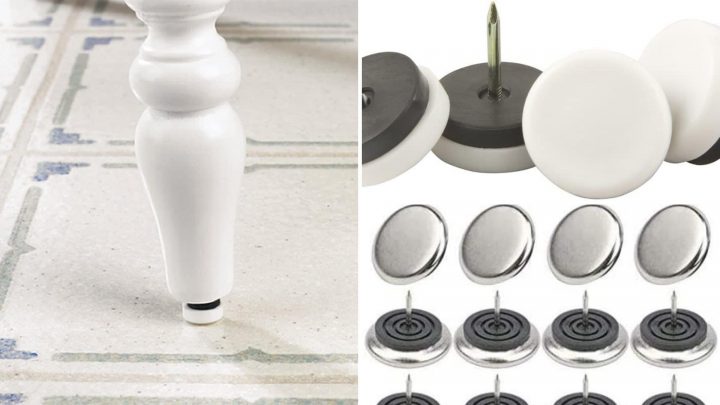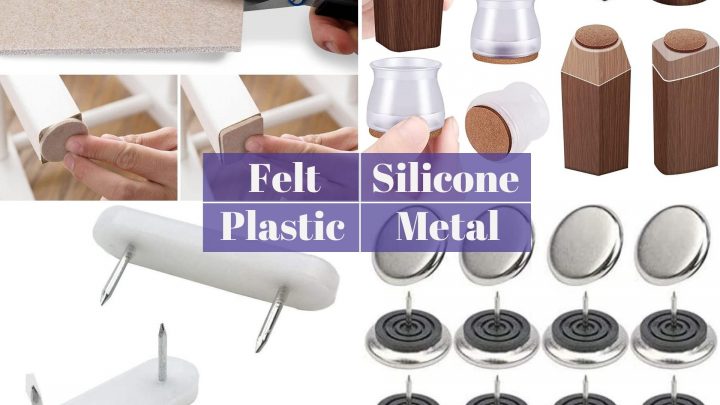When you move into a brand new house, you want to decorate, organize and protect your home so it sparkles forever. Furniture pads will let you move furniture around, knowing your floors are protected from scratches and gouges.
The challenge is finding the best furniture pads for your floors and furniture.

More homeowners worry about their hardwood floors but my experience says it pays to protect all flooring. With wall-t0-wall porcelain tile, I expected my floors to be pretty indestructible … and I was wrong.
The movers arrived while the tile was being installed. To insure the heaviest boxes with all my fabric could be brought inside, I had the quilt room grouted the day before the movers arrived. Imagine my surprise and anger when I saw how much damage the movers did to brand new tile floors.
So the hunt was on for furniture pads to protect my tile floors as we moved furniture into the rest of the house. I knew we'd be moving furniture a lot as I tried to see what looked best in each room.

Types of Furniture Pads
Most furniture pads (also called chair glides) are sold as universal pads for all types of floors. Most pads can be installed on any type of furniture. That doesn't mean they work equally well. The best choice for your floors depends on the type of flooring the furniture sits on and the amount of movement the furniture will have to withstand. This makes sense when you think about the kitchen chairs that get used several times a day versus bedroom furniture that sees little activity.
How do you pick the right protective furniture pads?

You might be lucky and have a friend who recommended the right pads for your home. You might be someone who shops almost exclusively online where you'll see many options which you're now researching. Or you might be old fashion (that's me) and buy your furniture pads at a store while picking up other items for your home.
First I bought plastic pads from IKEA, because they used rivets (round circles) to install the pads instead of nails. Because I hadn't done any research yet, I picked up these felt pads at Lowe's that used nails.


Different Ways Furniture Pads Can Be Attached
There are three ways to attach pads to furniture pieces. If you've got very large and/or heavy pieces that will rarely be moved, you can improvise with materials you already have. When moving these pieces you can place moving slides underneath temporarily, reusing for other moves as needed (shop Amazon for your best furniture pads).
- Stick-on pads – simply require you to peel off the protective paper and stick pads almost everywhere. They're typically made of felt or rubber and cost less than other pads. They won't last as long depending on how often you move the furniture. Most pads are round but you can find square or rectangular shapes if you look a bit more. If you're on a mission to put pads on most of your furniture, buy a package with multiple shapes like the one below …
- Nail-on pads -are more secure because they're attached to the furniture with a small nail, screw or rivet. You need to be careful when attaching these pads to insure the metal isn't exposed to your floor. And you'll want to inspect them periodically to make sure the protective surface is still securely attached.
- Slip-on pads – fit over a chair leg and are often made of rubber or a soft plastic. They're less likely to fall off like a stick-on pad or you won't have to worry about a nail becoming exposed and scratching your floor.

Matching Furniture Pad Materials to Your Floor
The most common materials used for furniture slides are felt and plastic. You'll also find pads made with rubber, cork and metal. How to you decide which type of material to use? It depends on the type of flooring you're trying to protect and it's important as the wrong material could lead to floor damage.
- Hardwood floors – will do best with felt or rubber furniture pads. Make sure the felt is thick enough, especially when using the pads for very heavy furniture which will compress the material. With rubber you want to watch out for potential scuff marks.
- Tile floors – are similar to hardwood, doing best with felt or rubber furniture pads. Now that I've used moving pads quite a bit, I can see the scuff marks on the pads and understand why plastic isn't good for tile (or wood).
- Soft floors like vinyl – can be protected with felt, rubber or plastic.
- Carpeting – needs a harder material in order for the furniture to glide, so plastic or steel work best.

You might also have some unique requirements based on the type of furniture you have. My leather chair above has huge, L-shaped feet so that need more protection than two small circles. There are also swivel furniture pads if the bottom of your chair legs aren't flat. It's likely you can find a workable solution if you understand what you need and take time to search (online recommended) for what you want.













Leave a Reply